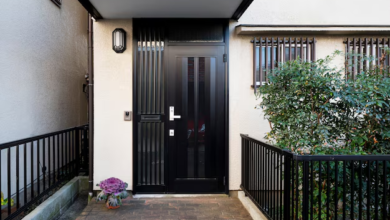Taking photographs is something that reached beyond language, and the gadget in your hand is the key to it. In particular, the Olympus 1000 camera is an excellent device for ordinary users of photography as well as for professionals. This is valuable for any person, who is really interested to Photography, and would like to take their Olympus 1000 to the next level. Here it is, an article that will not only help you get started with the Olympus 1000 camcorder but will also offer expertise on the customize settings of the camcorder.
Understanding the Olympus 1000: A Brief Overview
But, again, to get deeper into the description of the olympus 1000, it is possible to accentuate several unique features, which define the device. This model has a good image quality, a reliable construction and an intuitive operation – the Olympus 1000 is a tool created for contemporary photographers. Fine print, fast phase detection autofocus, face detection and a host of settings, make this a great camera for great shots any time.
Setting Up Your Olympus 1000
Unboxing and Initial Setup
Soon, the process of familiarization with the features of the Olympus 1000 starts, and it begins with the unpacking of the device. When unpacking the camera, you will find out that it is supplied together with all the essential components for shooting. Ensure that it is well-charged before use and put an optional high-speed memory card for photographic image storage.
Configuring Basic Settings
When your camera is loaded, it is advisable to start setting up the basic form of the camera. First of all, you should set the date and time, as you may know this information is included in metadata of the photos. After that, go to the menu to adjust quality of the images, so that they are clear. The Olympus 1000 comes with different file formats, that is, RAW and JPEG. It may also be worth considering that if you want high-quality professional-quality photos, you should probably shoot in RAW as it is more flexible in subsequent processing.
Mastering the Olympus 1000: Key Features
Autofocus System
Table 3 This table shows the comparison of Olympus 1000 with other cameras One of the beautiful things about the Olympus 1000 is that this camera is now equipped with an autofocus system. It has several focusing options which include single point AF, AF –continuous, and tracking AF. As mentioned earlier, it is important to learn when each of these mode should be applied for better picture definition. It also presents the possibilities of single-point autofocus for the stationary subjects and for the subject that is in movements, there is need of the continuous of autofocus.
Customizable Buttons and Dials
The Olympus 1000 is designed with customization in mind. It allows you to assign frequently used functions to specific buttons and dials, making your shooting process more efficient. Spend some time customizing the layout to suit your style. This will enable you to change settings quickly without taking your eye off the viewfinder.
Image Stabilization
Another feature that sets the Olympus 1000 apart is its in-body image stabilization (IBIS). This system compensates for camera shake, allowing you to shoot at slower shutter speeds without sacrificing image sharpness. Whether you’re shooting handheld in low light or capturing fast-moving action, IBIS ensures that your photos remain crisp and clear.
Shooting Techniques with the Olympus 1000
Understanding Exposure
Mastering exposure is key to getting the most out of your Olympus 1000. Exposure is controlled by three main settings: aperture, shutter speed, and ISO. The camera’s manual mode allows you to control each of these settings independently, giving you complete creative freedom. Use a wide aperture for shallow depth of field or a narrow aperture for greater depth. Adjust the shutter speed to freeze action or create motion blur, and set the ISO based on the lighting conditions.
Utilizing Advanced Shooting Modes
There are however several special shooting modes that are available on the Olympus 1000 and these can be quite useful in your photography. For example, there is the High-Resolution Shot mode, which allows to take multiple shots within a few seconds and combine them into a single shot with incredibly high detail. The Live Composite mode is the best for exposing a scene for a long time in order not to overexpose light trails.
Creative Filters and Art Modes
If you want to enhance the effect asked for by the subject, do not hesitate to use the spaceman demo filter options and art modes. This enables user to refine effects such as, black and white, sepic or dramatical tones at the situ of the camera. This can save time when editing and even come up with different ways of viewing the world by looking through the lens.
Post-Processing with the Olympus 1000
Editing in Olympus Workspace
After capturing your images, the next step in mastering the Olympus 1000 is post-processing. Olympus Workspace is the proprietary software designed for editing photos taken with Olympus cameras. It offers a wide range of tools for adjusting exposure, color balance, and sharpness. Since you’re working with files from the Olympus 1000, the software is optimized to deliver the best results.
Exporting and Sharing Your Photos
Once you’ve finished editing, it’s time to export your photos. Olympus Workspace allows you to export images in various formats and resolutions, depending on your needs. Whether you’re sharing on social media or preparing prints, the Olympus 1000 ensures that your photos retain their quality and detail.
Maintenance and Care for the Olympus 1000
Cleaning and Storage
To keep your Olympus 1000 in top condition, regular maintenance is essential. Clean the lens with a microfiber cloth and avoid touching the sensor. When not in use, store the camera in a cool, dry place and remove the battery to prevent leakage.
Firmware Updates
Olympus regularly releases firmware updates to improve camera performance and add new features. Check the Olympus website periodically to ensure your camera is up-to-date. Updating the firmware is a straightforward process that can be done via the camera’s menu or by connecting it to your computer.
Conclusion: Mastering the Olympus 1000 is a Journey
Learning the Olympus 1000 digital camera model is a quite challenging and at the same time it is great fun to bring skills and creativity into harmony. Knowing its features and firmly grounding oneself in the basic techniques as well as dedicating time to post-processing, this tool is can be used to appropriate effect. This is a handy device to use when shooting landscapes, people or even dynamic scenes and it will assist you in creating the image you want.




